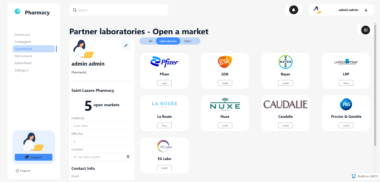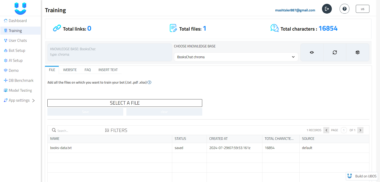Frequently Asked Questions (FAQ) about JuliaDDA and UBOS
Q: What is JuliaDDA?
A: JuliaDDA is a Julia-based implementation of the Discrete Dipole Approximation (DDA) method, accelerated with GPU, used for calculating the scattering of electromagnetic radiation by particles of arbitrary shape.
Q: What are the primary applications of JuliaDDA?
A: JuliaDDA is applied in nanophotonics, materials science, atmospheric science, biomedical optics, and astronomy for simulating light-matter interactions.
Q: What is the Discrete Dipole Approximation (DDA)?
A: DDA approximates a continuous object as a collection of small dipoles. By solving Maxwell’s equations for these dipoles, it accurately predicts the scattering behavior of the object.
Q: What advantages does Julia offer for scientific computing compared to other languages?
A: Julia is a high-performance programming language designed for scientific computing. It is known for its speed, flexibility, and an extensive ecosystem of scientific computing libraries.
Q: How does GPU acceleration enhance the performance of JuliaDDA?
A: GPU acceleration significantly speeds up computation times for JuliaDDA compared to CPU-based implementations, crucial for large-scale simulations and real-time analysis.
Q: What is the UBOS AI Agent Development Platform?
A: UBOS is a full-stack AI Agent Development Platform focused on bringing AI Agents to every business department. It helps orchestrate AI Agents, connect them with enterprise data, and build custom AI Agents with LLM models and Multi-Agent Systems.
Q: How does UBOS enhance JuliaDDA’s capabilities?
A: The UBOS platform provides a robust environment for integrating JuliaDDA with AI agents and workflows, enabling AI-driven scientific discovery and innovation.
Q: What types of objects can JuliaDDA simulate?
A: JuliaDDA can handle particles of any shape, making it suitable for a wide range of applications.
Q: Can JuliaDDA simulate different wave parameters?
A: Yes, JuliaDDA allows users to define and adjust wave parameters (k, ka, a) to tailor simulations to specific research needs.
**Q: How do I visualize results from JuliaDDA? A: JuliaDDA has PlotlyJS backend, which allows you to plot scatterers, far-field power, and differential cross-sections for insightful data representation.
Q: What is an AI agent and how can it be used with JuliaDDA?
A: An AI agent is a program that can perceive its environment and take actions to achieve a specific goal. With JuliaDDA, an AI agent can automate the simulation and analysis of light scattering phenomena.
Q: How does UBOS integrate with data sources?
A: UBOS provides seamless connectivity to various data sources, allowing AI agents to access and process experimental data for JuliaDDA simulations.
Q: Can I create custom AI agents on the UBOS platform?
A: Yes, UBOS supports the integration of custom LLM models, allowing users to build AI agents that can reason about and interpret the results of JuliaDDA simulations.
Q: What are Multi-Agent Systems and how are they used with UBOS and JuliaDDA?
A: Multi-Agent Systems involve multiple agents collaborating to solve complex problems. UBOS enables the creation of such systems for problems involving light scattering.
Q: What is Model Context Protocol (MCP) server?
A: MCP server acts as a bridge, allowing AI models to access and interact with external data sources and tools.
Q: How do I get started with JuliaDDA on UBOS?
A: Install JuliaDDA, set up a UBOS account, create an AI agent, integrate JuliaDDA, develop your workflow, and deploy your agent on the UBOS platform.
Q: Is JuliaDDA open-source?
A: Yes, JuliaDDA is an open-source project. You can find the source code and documentation on GitHub.
JuliaDDA
Project Details
- jinsoo/DDA_julia.jl
- MIT License
- Last Updated: 9/18/2023
Recomended MCP Servers

Telegram Submission Bot
Model Context Protocol Servers for Milvus


MCP server to provide Jira Tickets information to AI coding agents like Cursor

A Model Content Protocol server that provides tools to search and retrieve academic papers from PubMed database.
A Model Context Protocol Server connector for Bitrefill public API, to enable AI agents to search and shop...
Ask users questions from your LLM! interactive-mcp: Local, cross-platform MCP server for interactive prompts, chat & notifications.
MCP Calculate Server

An MCP server that connects to OPC UA-enabled industrial systems.

 From vibe coding to vibe deployment. UBOS MCP turns ideas into infra with one message.
From vibe coding to vibe deployment. UBOS MCP turns ideas into infra with one message.





